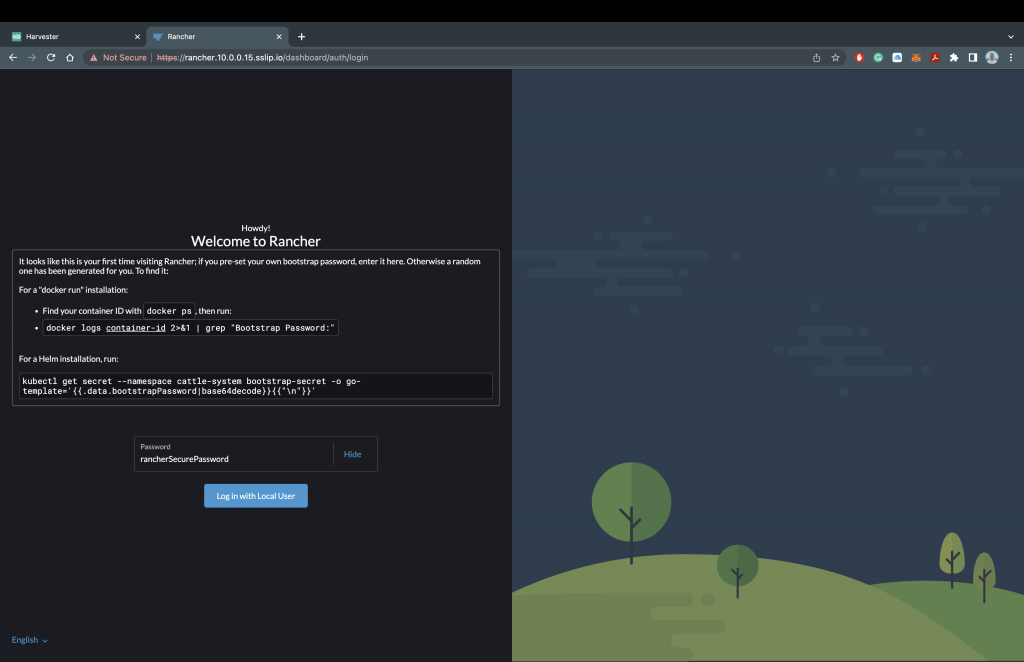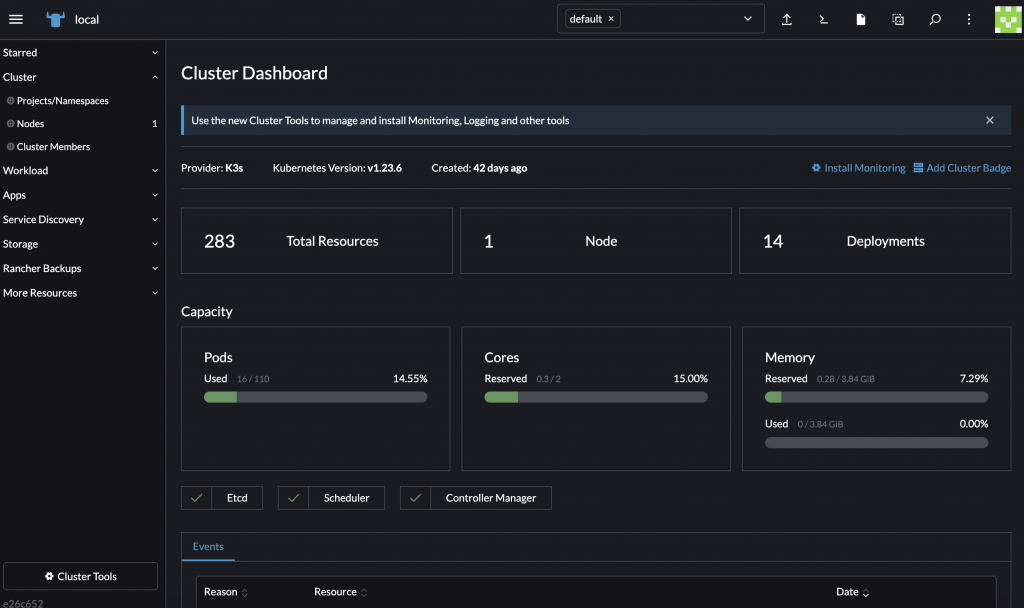Understanding Rancher: A Comprehensive Guide
Introduction
Container orchestration has emerged as a key component of contemporary IT infrastructure, facilitating the effective management and expansion of containerized applications within enterprises. Of all the technologies out now, Rancher is one of the most powerful platforms for making Kubernetes maintenance easier. We’ll explore Rancher’s features, how it varies from other tools like Lens, its useful uses, and a comprehensive setup tutorial in this blog article.
Scenario
In the ever-changing world of technology, a mid-sized software company is determined to enhance their container management strategies to keep up with the rapid pace of development and deployment. With a range of microservices fueling their applications, the DevOps team is challenged to effectively manage Kubernetes clusters in various environments.
To tackle this issue, they opt to implement Rancher, known for streamlining Kubernetes orchestration. As the designated leader of the DevOps team, you take charge of the Rancher integration project. This involves thoroughly evaluating Rancher’s capabilities and seamlessly implementing it across the company’s infrastructure, including both on-premises servers and cloud instances. With Rancher’s user-friendly interface, your mission is to ensure a smooth and efficient deployment process.
What is a Rancher?
Rancher is a leading open-source container management platform designed to configure, deploy easily, and scale container applications. Providing a centralized interface to Rancher simplifies multi-cluster management, infrastructure provisioning, and application lifecycle management across multiple environments With robust features and easy integration, Rancher empowers organisations to run their container orchestration workflows better and accelerate digital transformation processes.
Key Features of Rancher:
● Multi-Cluster Management: Rancher gives users centralised management and visibility across various environments by enabling them to manage several Kubernetes clusters from a single interface.
● Infrastructure Provisioning: Whether it is on bare metal servers, virtual machines, or cloud instances, users can provide and manage the underlying infrastructure for their Kubernetes clusters using Rancher.
● Application Lifecycle Management: Rancher provides a full range of tools, such as support for Helm charts, GitOps workflows, and CI/CD pipelines, for the deployment, scaling, and upgrading of containerised apps.
● Monitoring and Logging: Rancher offers real-time visibility into cluster performance, resource utilization, and application health through integrations with well-known monitoring and logging technologies like Prometheus and Grafana.
● Security and Compliance: To guarantee the integrity and compliance of containerised workloads, Rancher offers strong security features like role-based access control (RBAC), network policies, and container scanning.
● Extensibility: Extensions, plugins, and custom integrations are all supported by Rancher, making it possible for customers to customize the platform to meet their unique needs.
Rancher vs. Lens:
While Rancher and Lens both offer Kubernetes management capabilities, they serve different purposes and cater to different user needs as follows:
Rancher:
- Provides a centralized platform for managing Kubernetes clusters across different environments, offering a comprehensive suite of tools for deployment, management, and monitoring.
- Offers a web-based management interface accessible via a browser, featuring guided workflows for cluster provisioning, application deployment, and monitoring.
- Targeted at DevOps teams, system administrators, and organizations looking for a centralized solution for Kubernetes management at scale.
- Offers a wide range of features including multi-cluster management, infrastructure provisioning, application deployment, monitoring, logging, and CI/CD integration.
Lens:
- Primarily focuses on providing a feature-rich Kubernetes IDE for developers, offering advanced debugging, visualization, and workflow automation capabilities.
- Provides a desktop application with a sleek user interface optimized for developers, offering features like cluster visualization, resource monitoring, YAML editing, and terminal access.
- Geared towards developers, Kubernetes enthusiasts, and power users who prefer a lightweight, developer-centric tool for interacting with Kubernetes clusters.
- Focuses on providing features tailored for development workflows such as cluster visualisation, resource monitoring, YAML editing, and terminal access.
Practical Applications of Rancher:
● Enterprise Kubernetes Adoption: Enterprises increasingly use Rancher to accelerate Kubernetes adoption, providing an integrated approach to managing containerised applications at scale.
● Hybrid Cloud Management: Rancher helps organisations manage hybrid cloud environments, including providing consistent management across on-premises data centers and public cloud platforms.
● DevOps Automation: Rancher streamlines DevOps practices by automating infrastructure provisioning, application deployment, and release management, resulting in faster time-to-market and improved collaboration between development and operations teams.
Setting Up Rancher:
Setting up Rancher is easy and can be performed in some simple steps:
Step 1: Prerequisites
Before you begin, ensure you have the following prerequisites:
- Access to a Linux server (physical or digital) with enough resources (CPU, RAM, disk area).
- Docker installed on the server. You can install Docker using the official installation guide: Install Docker Engine.
- Ports 80 and 443 open on the server’s firewall.
- A domain name pointing to the server’s IP address (optional but recommended for SSL/TLS certificates).
Step 2: Deploy Rancher Server
- SSH into your Linux server using a terminal or SSH client.
- Run the following Docker command to deploy the Rancher server container:
- sudo docker run -d –restart=unless-stopped -p 80:80 -p 443:443 rancher/rancher
- This command pulls the latest Rancher server image from Docker Hub and starts the container with ports 80 and 443 exposed.
Step 3: Access Rancher UI
- Once the Rancher server container is running, access the Rancher UI by opening a web browser and navigating to https://<server-ip> or https://<your-domain>.
- You’ll be prompted to set up an admin password. Follow the on-screen instructions to complete the setup.
Step 4: Add Clusters
- After setting up the admin password, log in to the Rancher UI with your credentials.
- Navigate to the “Clusters” tab in the Rancher UI.
- Click on the “Add Cluster” button.
- Choose the desired Kubernetes cluster type (e.g., custom, Amazon EKS, Google GKE) and follow the prompts to import existing clusters or create new ones.
Step 5: Configure Cluster Management
- Once the cluster is added, Rancher will start managing it. You can monitor the cluster’s status, view resource utilization, and perform various management tasks from the Rancher UI.
- Explore Rancher’s features, such as application deployment, monitoring, logging, security, and more.
Step 6: Additional Configuration
- Configure authentication providers (LDAP, Active Directory, SAML) for user authentication.
- Integrate Rancher with external storage providers, such as NFS, AWS S3, or Azure Blob Storage, for persistent data storage.
- Explore Rancher’s advanced features, such as multi-tenancy, role-based access control (RBAC), and custom resource definitions (CRDs).
Step 7: Monitor and Maintain
- Regularly monitor your Rancher clusters for performance, security, and compliance. Stay up to date with Rancher updates and security patches by subscribing to release notes and security advisories.
Conclusion
Rancher is a powerful container management platform that simplifies the deployment and management of Kubernetes clusters, providing advanced features for multi-cluster management, infrastructure provisioning, application deployment, and monitoring Due to its ease of use, will be expanded, with extensive ecosystem support, Rancher wants organizations to embrace containerization and accelerate their digital transformation journey Priceless for the sake There is a way.
In summary, Rancher provides a solution for container orchestration, enabling organisations to build, deploy and scale container applications with reliability and efficiency Whether you are a small business a startup or a large business, Rancher empowers you to leverage the full power of Kubernetes and Docker, That makes it easier to innovate and deliver value to customers.






